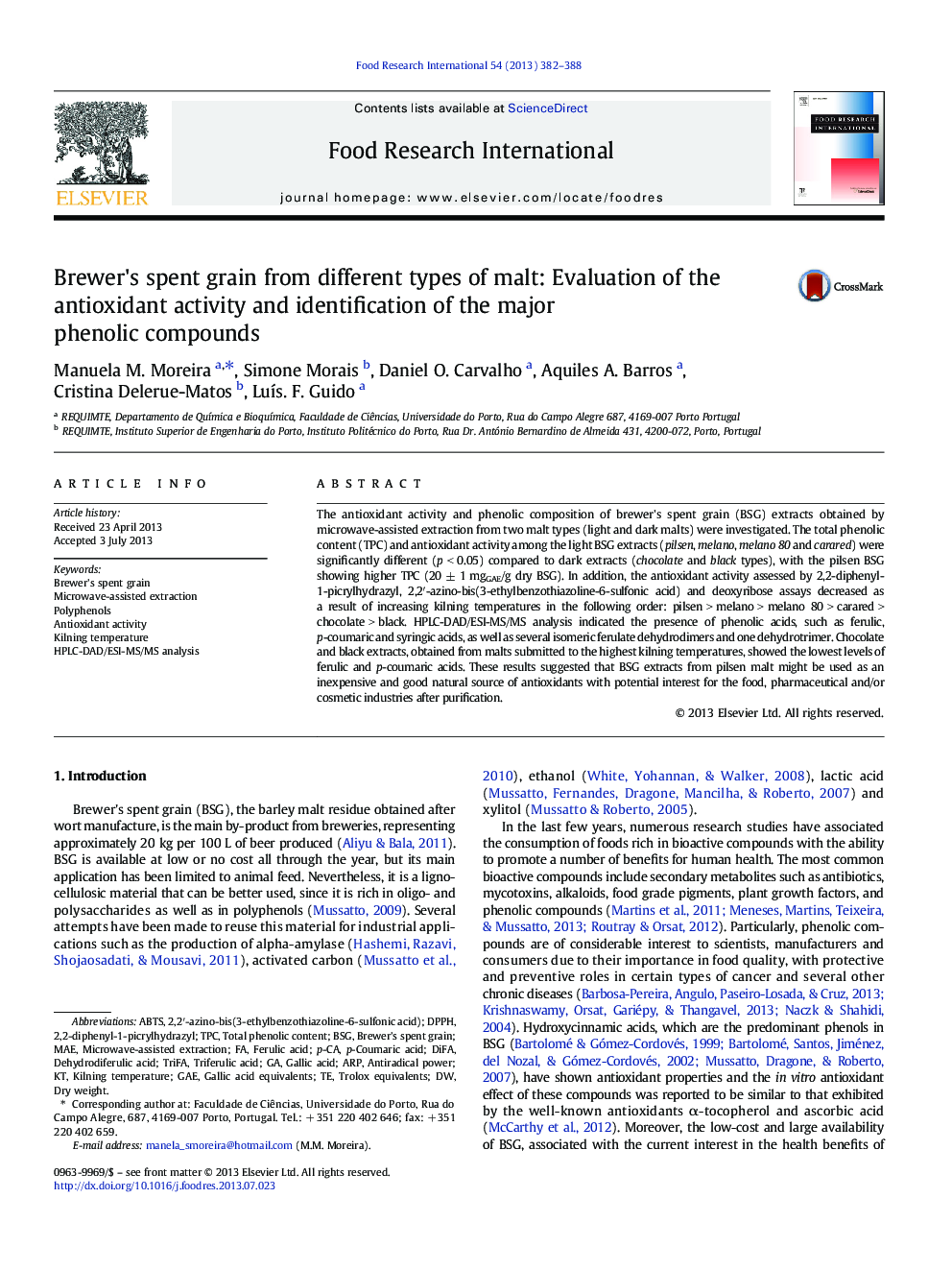| Article ID | Journal | Published Year | Pages | File Type |
|---|---|---|---|---|
| 6397287 | Food Research International | 2013 | 7 Pages |
â¢Brewer's spent grain (BSG) extracts from light and dark malts were studied.â¢Antioxidant activity decreased as a result of increasing kilning temperatures.â¢Light BSG (pilsen, melano, melano 80, carared) showed higher antioxidant activity.â¢Ferulic and p-coumaric acids were the major phenolics present in BSG extracts.â¢Pilsen BSG might be used as an inexpensive and natural source of antioxidants.
The antioxidant activity and phenolic composition of brewer's spent grain (BSG) extracts obtained by microwave-assisted extraction from two malt types (light and dark malts) were investigated. The total phenolic content (TPC) and antioxidant activity among the light BSG extracts (pilsen, melano, melano 80 and carared) were significantly different (p < 0.05) compared to dark extracts (chocolate and black types), with the pilsen BSG showing higher TPC (20 ± 1 mgGAE/g dry BSG). In addition, the antioxidant activity assessed by 2,2-diphenyl-1-picrylhydrazyl, 2,2â²-azino-bis(3-ethylbenzothiazoline-6-sulfonic acid) and deoxyribose assays decreased as a result of increasing kilning temperatures in the following order: pilsen > melano > melano 80 > carared > chocolate > black. HPLC-DAD/ESI-MS/MS analysis indicated the presence of phenolic acids, such as ferulic, p-coumaric and syringic acids, as well as several isomeric ferulate dehydrodimers and one dehydrotrimer. Chocolate and black extracts, obtained from malts submitted to the highest kilning temperatures, showed the lowest levels of ferulic and p-coumaric acids. These results suggested that BSG extracts from pilsen malt might be used as an inexpensive and good natural source of antioxidants with potential interest for the food, pharmaceutical and/or cosmetic industries after purification.
